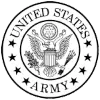





Available Civil 3D Instructor-Led Courses
Available Civil 3D On-Demand Courses
Virtual Live Instructor
Financing Available
Free Repeat
We offer private group training services for organizations looking to upskill their team members with a live-instructor.
Training options include:
Learn more about how Private Group Training from Business Computer Skills can help your team.
Civil 3D FAQ
What is Civil 3D
Autodesk Civil 3D is a civil engineering design and documentation software that supports Building Information Modeling (BIM) workflows. It's widely used by civil engineers, designers, and drafters to plan, design, and manage civil engineering projects. Civil 3D is primarily aimed at projects involving infrastructure, such as roads, highways, railroads, land development, water and sewer systems, storm water management, and environmental management.
Business Computer Skills offers Inventor training classes nationwide and online.
Key Features and Functionality of Autodesk Civil 3D:
1. Dynamic Model-Based Design
- BIM Integration: Civil 3D supports BIM workflows, meaning it creates intelligent, dynamic 3D models that are interrelated and update automatically when changes are made. If you change one part of the model (e.g., a roadway alignment), associated parts (such as profiles, cross-sections, and volume calculations) automatically adjust.
- Data Management: The software allows you to organize project data using surfaces, alignments, corridors, and networks. Each of these objects can be connected to create a comprehensive project model.
2. Terrain Modeling
- Surface Creation and Analysis: Civil 3D allows the creation of digital terrain models (DTMs) or surfaces from various data sources, such as survey data, point clouds, or LiDAR data. Surfaces are used to represent the existing and proposed ground conditions and can be analyzed for volumes, slopes, contours, and more.
- Grading Tools: Users can generate grading solutions to model site topography, drainage paths, or complex earthwork designs for land development projects.
3. Alignment and Profile Design
- Horizontal Alignments: Civil 3D enables the design of horizontal alignments, such as road centerlines, railway tracks, or pipe networks. These alignments can be constrained by curves, tangents, and transitions, and the software provides tools for complex curve design.
- Vertical Alignments (Profiles): Users can create profiles that represent the vertical aspect of an alignment. For instance, in a road design, a profile would show the changes in elevation over the length of the road, enabling the design of cuts, fills, and slopes.
4. Corridor Modeling
- Road and Highway Design: Civil 3D excels in creating corridor models, which are 3D representations of linear infrastructure (such as roads and highways). A corridor is generated by applying a typical cross-section (assembly) along a defined alignment and profile. These corridors adapt dynamically to changes in the alignment or profile.
- Intersections and Roundabouts: The software includes tools to automate the design of complex intersections, roundabouts, and other road configurations. These intersections update automatically when changes are made to the parent alignments.
5. Pipe Network Design
- Storm and Sanitary Sewer Networks: Civil 3D allows users to design and analyze stormwater and sanitary sewer systems. You can create both gravity and pressure pipe networks, set pipe sizes and elevations, and analyze flow based on design criteria.
- Hydraulic and Hydrologic Analysis: It integrates with external analysis tools like Autodesk Storm and Sanitary Analysis (SSA) for hydrological studies and stormwater management. This enables engineers to simulate and analyze drainage patterns, runoff, and capacity in the network.
6. Survey Data Management
- Survey Database: Civil 3D supports the collection and management of survey data, including points, traverses, and breaklines. It integrates with survey instruments and allows field-to-finish workflows.
- Topographic Maps: Surveyors can use the software to convert raw survey data into topographic surfaces, which can then be used to design or calculate earthwork quantities.
7. Quantity Takeoffs and Cost Estimation
- Earthwork Volumes: Civil 3D provides tools to calculate the cut-and-fill volumes needed for earthworks. These calculations can be dynamically linked to surface changes, ensuring accuracy when the design evolves.
- Material Quantities: Corridor modeling in Civil 3D can be used to extract quantities of materials like asphalt, concrete, and base layers. These quantities can be linked with costing data for accurate project estimates.
8. Plan Production and Documentation
- Dynamic Cross-Sections and Profiles: The software automatically generates cross-sections and profiles based on the 3D model, and these views update when changes are made to the design.
- Sheet Set Creation: Civil 3D has tools for automating the creation of plan and profile sheets, including road layouts, pipe networks, and grading plans. This is helpful for reducing manual drafting work and ensuring consistency across the project.
- Annotation and Labeling: Intelligent annotation tools ensure that labels (for contours, profiles, alignments, etc.) are dynamically linked to the objects they reference. Changes in the design update the labels automatically.
9. Collaboration and Data Sharing
- Civil 3D and AutoCAD Integration: Civil 3D is built on top of AutoCAD, so it includes all the drafting and design tools of AutoCAD, making it familiar to many users. Civil 3D objects like surfaces, alignments, and profiles can be displayed in 2D AutoCAD views.
- Data Shortcuts: Teams can work collaboratively on large projects by using data shortcuts. This allows team members to reference critical project data (like alignments or surfaces) without needing to work in the same drawing file.
- Cloud Integration: Civil 3D integrates with Autodeskís cloud services, enabling collaboration across teams and stakeholders in different locations. This supports a connected BIM workflow, allowing real-time data exchange between project partners.
10. Analysis and Simulation
- Stormwater Management: Civil 3D provides drainage design tools to handle stormwater runoff, pond design, and pipe network analysis. It includes the ability to model water flow and pressure through storm and sanitary sewers.
- Roadway Analysis: Tools for superelevation calculation, lane widening, and road design evaluation are included. The software can perform design checks to ensure roadways meet design criteria for safety and efficiency.
Typical Uses of Autodesk Civil 3D:
- Roads and Highways: Design and modeling of roads, including lane configurations, curbs, gutters, intersections, and signage.
- Land Development: Subdivision planning, grading design, utility placement, and stormwater management for residential or commercial projects.
- Railroads: Civil 3D is used to design railway alignments, profiles, and corridors for rail infrastructure.
- Utilities and Infrastructure: The software handles the design of underground utilities, water and sewer systems, and storm drainage.
- Environmental Projects: Civil 3D supports projects like flood control, environmental restoration, and land reclamation by providing terrain modeling and hydrologic tools.
Integration with Other Autodesk Products:
- Revit: Integration with Autodesk Revit for building and infrastructure projects that need both architectural and civil designs to coexist, such as when designing roads and utilities alongside buildings.
- InfraWorks: InfraWorks is used for early-stage, high-level conceptual design and analysis. Civil 3D can import and refine these conceptual designs into detailed construction models.
- Navisworks: Civil 3D data can be integrated with Navisworks for 4D simulation, clash detection, and project management.
Benefits of Using Civil 3D:
- Improved Efficiency: Automating many design tasks helps reduce errors and speeds up project delivery.
- Real-Time Updates: Dynamic links between project elements mean that when changes are made in one part of the design, all related parts are updated automatically.
- Accuracy and Precision: Civil 3Dís powerful modeling tools allow for accurate calculations of quantities, volumes, and design elements.
- BIM Collaboration: Supports collaborative workflows across disciplines (e.g., structural, architectural, environmental, and civil), making it easier to coordinate designs.
In summary, Autodesk Civil 3D is a comprehensive solution for civil engineering design, offering advanced tools for terrain modeling, alignment design, pipe networks, corridor modeling, and more. Its integration with BIM workflows makes it highly effective for managing complex infrastructure projects, from planning to construction.
In 2024, Autodesk offers several certification paths for Autodesk Civil 3D, primarily aimed at professionals in civil engineering and infrastructure design:
- Autodesk Certified User (ACU): This entry-level certification is intended for students and beginners. It validates foundational skills in Autodesk Civil 3D, such as basic workflows and tools, making it a good starting point for those new to the software.
- Autodesk Certified Professional (ACP) - Civil 3D for Infrastructure Design: This is a more advanced certification that demonstrates your proficiency in handling complex infrastructure projects. The exam covers critical Civil 3D skills such as working with points, parcels, surfaces, alignments, profiles, corridors, and pipe networks. This certification is designed for professionals with experience and those who can solve complex workflow challenges.
Both certifications are valuable in showcasing your abilities to potential employers, helping you stand out in a competitive market. The certifications are typically valid for 2 to 3 years, after which you would need to retake the exam to maintain your certification.
For more information, visit the official Autodesk certification page here.
Jobs that Use Autodesk Civil 3D
1. Civil Engineer
- Responsibilities: Design and oversee infrastructure projects such as roads, highways, bridges, and stormwater management systems.
- Civil 3D Usage: Engineers use Civil 3D for designing, drafting, and creating 3D models for projects.
2. Transportation Engineer
- Responsibilities: Plan, design, and manage transportation systems such as highways, railways, airports, and public transit.
- Civil 3D Usage: Used for designing roadway alignments, grading, and analyzing transportation networks.
3. Land Development Engineer
- Responsibilities: Design residential, commercial, and industrial land development projects including grading, drainage, and utility systems.
- Civil 3D Usage: Employed for site grading, parcel creation, and planning road layouts.
4. Surveyor
- Responsibilities: Measure land areas, distances, and angles to support construction and development projects.
- Civil 3D Usage: Surveyors use Civil 3D for importing survey data, creating terrain models, and plotting contours.
5. Drafter/Designer
- Responsibilities: Assist civil engineers by creating detailed technical drawings, plans, and schematics for infrastructure projects.
- Civil 3D Usage: Used for preparing construction documentation and detailed plans.
6. Water Resources Engineer
- Responsibilities: Design and analyze systems related to water supply, wastewater, drainage, and flood control.
- Civil 3D Usage: Helpful for designing drainage systems, stormwater management, and analyzing hydraulic networks.
7. Geotechnical Engineer
- Responsibilities: Design foundations, earthworks, and retaining structures.
- Civil 3D Usage: Used for visualizing ground conditions and designing earthworks.
8. Environmental Engineer
- Responsibilities: Design solutions for pollution control, waste management, and remediation of contaminated sites.
- Civil 3D Usage: Used for environmental site design, grading, and drainage analysis.
9. Urban Planner
- Responsibilities: Plan and design urban spaces, infrastructure, and land use while considering environmental and community factors.
- Civil 3D Usage: Helps with terrain analysis, infrastructure design, and planning land use patterns.
10. Construction Manager
- Responsibilities: Oversee the construction of infrastructure projects, ensuring they meet design specifications, budgets, and schedules.
- Civil 3D Usage: Used for reviewing designs, tracking project progress, and visualizing construction phases.
11. GIS Analyst
- Responsibilities: Analyze and manage spatial data to support infrastructure planning and development.
- Civil 3D Usage: Often integrates with GIS software for creating and analyzing geospatial data in civil projects.
We offer live-instructor group training classes for your team.
Upskill your team from the comfort of your office or online.
Benefits of Group Training Include:
- Experienced Professional Instructor Trains Your Team
- Content Focused On Your Team's Needs
- Convenient Scheduling and Class Setup
- Significant Per/Student Cost Savings
- Online, On-Site and Blended Options Available
Mesa Location FAQ
Mesa is an interesting place. Here is some information to help you learn more about Mesa
Ten Interesting Facts about Mesa, AZ
- Mesa is the third largest city in Arizona.
- The city is renowned for its thriving arts and cultural scene.
- Mesa hosts several annual festivals celebrating music, art, and community.
- It features numerous historic sites from the ancient Hohokam civilization.
- Mesa offers abundant outdoor activities with its many parks and preserves.
- The city has a diverse culinary scene with award-winning restaurants.
- Mesa is known for its excellent public schools and family-friendly atmosphere.
- It is a growing hub for technological innovation and business development.
- Mesa proudly preserves its Native American heritage and history.
- The city enjoys over 300 days of sunshine each year.
Ten Fun Things to Do in Mesa, AZ
- Mesa Arts Center: A vibrant cultural hub offering theater, art, and music performances. — Address: 1 E Main St, Mesa, AZ 85210 — Distance: 2.0 miles
- Mesa Grande Cultural Park: An ancient Hohokam archaeological site with interpretive exhibits. — Address: 1630 E Broadway Rd, Mesa, AZ 85202 — Distance: 3.5 miles
- Arizona Museum of Natural History: Explore regional history through engaging exhibits and artifacts. — Address: 2850 N Macdonald, Mesa, AZ 85201 — Distance: 2.8 miles
- Usery Mountain Regional Park: Outdoor recreation with hiking, picnicking, and scenic views. — Address: 5000 S Park Dr, Mesa, AZ 85210 — Distance: 6.0 miles
- i.d.e.a. Museum: Interactive exhibits that blend art and science for all ages. — Address: 1370 W Main St, Mesa, AZ 85201 — Distance: 2.5 miles
- Sloan Park: Home to spring training baseball with engaging stadium tours. — Address: 2501 S Dobson Rd, Mesa, AZ 85202 — Distance: 4.0 miles
- Mesa Riverview: A shopping, dining, and entertainment destination on the waterfront. — Address: 4385 S Riverview Dr, Mesa, AZ 85202 — Distance: 4.2 miles
- Golfland Sunsplash: A family-friendly water park and mini golf facility for a fun day out. — Address: 1545 S Center St, Mesa, AZ 85204 — Distance: 0.8 miles
- Riverview Park: A community park featuring sports facilities and playgrounds. — Address: 2250 S Center St, Mesa, AZ 85204 — Distance: 1.0 mile
- Mesa Historical Museum: Discover Mesa's rich history through engaging exhibits. — Address: 415 S Main St, Mesa, AZ 85210 — Distance: 2.2 miles
Ten Restaurants near 1910 S. Stapley Drive, Suite 221, Stapley Corporate Center, Mesa, AZ 85204
- The Steakhouse at Mesa: Upscale dining offering premium steaks in a refined atmosphere. — Address: 1001 E Main St, Mesa, AZ 85204 — Distance: 0.5 miles
- Mesa Grill: A casual spot serving American classics and comfort food. — Address: 2101 S Center St, Mesa, AZ 85204 — Distance: 0.3 miles
- Blue Cactus Cantina: Modern Mexican cuisine with vibrant, bold flavors. — Address: 1500 S Dobson Rd, Mesa, AZ 85204 — Distance: 0.7 miles
- Mediterranean Breeze: Enjoy fresh Mediterranean dishes with authentic spices. — Address: 1234 E Apache Blvd, Mesa, AZ 85204 — Distance: 1.0 mile
- The Pasta House: A cozy Italian restaurant known for its handcrafted pasta. — Address: 980 S Stapley Dr, Mesa, AZ 85204 — Distance: 0.4 miles
- Sunset Sushi: A trendy sushi bar offering creative rolls and fresh seafood. — Address: 2002 S Stapley Dr, Mesa, AZ 85204 — Distance: 0.6 miles
- Urban Tap: A gastropub with a diverse menu and an array of craft beers. — Address: 305 S Main St, Mesa, AZ 85204 — Distance: 0.8 miles
- Veggie Delight: A plant-based eatery offering innovative vegetarian options. — Address: 400 S Center St, Mesa, AZ 85204 — Distance: 1.2 miles
- Southern Comfort Kitchen: Homestyle Southern cooking served in a relaxed setting. — Address: 555 S Stapley Dr, Mesa, AZ 85204 — Distance: 0.5 miles
- Sweet Treats Cafe: A charming cafe offering delicious desserts and artisan coffee. — Address: 789 S Main St, Mesa, AZ 85204 — Distance: 0.9 miles
Ten Hotels near 1910 S. Stapley Drive, Suite 221, Stapley Corporate Center, Mesa, AZ 85204
- Mesa Grand Hotel: Luxurious accommodations featuring modern amenities and elegant decor. — Address: 1000 S Center St, Mesa, AZ 85204 — Distance: 0.6 miles
- Desert Oasis Inn: A comfortable stay with a touch of Southwestern charm. — Address: 1100 E Stapley Dr, Mesa, AZ 85204 — Distance: 0.4 miles
- Sun Valley Suites: Spacious suites that blend comfort with modern style. — Address: 1200 S Dobson Rd, Mesa, AZ 85204 — Distance: 0.7 miles
- The Plaza at Mesa: A boutique hotel offering personalized service and elegant rooms. — Address: 1300 S Main St, Mesa, AZ 85204 — Distance: 0.5 miles
- Mesa Comfort Inn: An affordable hotel providing convenient access to local attractions. — Address: 1400 S Center St, Mesa, AZ 85204 — Distance: 0.8 miles
- Canyon View Hotel: Relax in modern facilities with scenic desert views. — Address: 1500 E Stapley Dr, Mesa, AZ 85204 — Distance: 0.9 miles
- Red Rock Lodge: Enjoy rustic charm paired with modern comforts in a peaceful setting. — Address: 1600 S Dobson Rd, Mesa, AZ 85204 — Distance: 1.0 mile
- Arizona Inn: A well-appointed hotel focused on guest satisfaction. — Address: 1700 S Center St, Mesa, AZ 85204 — Distance: 0.8 miles
- Fiesta Hotel: A vibrant hotel that offers a unique blend of style and comfort. — Address: 1800 E Main St, Mesa, AZ 85204 — Distance: 1.1 miles
- Starlight Suites: Modern suites with a touch of luxury and top-notch amenities. — Address: 1900 S Stapley Dr, Mesa, AZ 85204 — Distance: 0.3 miles
Below is a list of local libraries in the area that may also provide computer training near Mesa, Arizona:
East Mesa Regional Library
635 North Power Road
Mesa, AZ 85207
480-644-3184
East Mesa Regional Library
Mesa Public Library
64 E. First St.
Mesa, AZ 85201
480-644-3100
Mesa Public Library
Dobson Ranch Branch Library
2425 South Dobson Road
Mesa, AZ 85202
480-644-3441
Dobson Ranch Branch Library
We offer live-instructor group training classes for your team.
Upskill your team from the comfort of your office or online.
Benefits of Group Training Include:
- Experienced Professional Instructor Trains Your Team
- Content Focused On Your Team's Needs
- Convenient Scheduling and Class Setup
- Significant Per/Student Cost Savings
- Online, On-Site and Blended Options Available
Learn Civil 3D from a Professional Instructor and take your skills to the next level
AutoCAD is a professional computer computer-assisted drafting and design software appliaction. AutoCAD is used to produce 2D and 3D blueprints and engineering plans for architectural, engineering and construction projects.
Business Computer Skills offers a variety of Civil 3D training classes in Mesa, AZ. Get the professional training you need to take your Civil 3D skills to the next level.
Whether you want to learn AutoCAD basics, or become a master of creating professional quality AutoCAD drafts, we have the right course for you.
Learn How To:
- AutoCAD Basics
- Understanding the AutoCAD workspace and user interface
- Using basic drawing, editing, and viewing tools
- Organizing drawing objects on layers
- Inserting reusable symbols (blocks)
- Preparing a layout to be plotted
- Adding text, hatching, and dimensions
- Using advanced editing and construction techniques
- Adding parametric constraints to objects
- Creating local and global blocks
- Setting up layers, styles, and templates
- Attaching External References

Hands On
Professional Trainers
Convenient Scheduling
Small Class Sizes
Affordable Courses
Authorized Content
Testimonials
This was the class I needed.
The instructor Jeff took his time and made sure we understood each topic before moving to the next. He answered all of our questions, and I don't know about the rest of the students, but was very pleased with this experience.
I finally understand how to use Excel.
-Amanda T (Yale New Haven Hospital).
Great class!
We were able to cover a lot of information in one day without getting overwhelmed.
-Maria R (Microsoft).
Mesa, AZ Location Details
We hold our Civil 3D instructor-led training classes for the Mesa area at the following location:
Mesa Training Center
Mesa, AZ
This location also serves the following areas around Mesa, Arizona:
Additional Civil 3D autocadTraining Locations in Arizona
Below is a list of local libraries in the area that may also provide Civil 3D training near Mesa, Arizona:
635 North Power Road
Mesa, AZ 85207
480-644-3184
East Mesa Regional Library
Mesa Public Library
64 E. First St.
Mesa, AZ 85201
480-644-3100
Mesa Public Library
Dobson Ranch Branch Library
2425 South Dobson Road
Mesa, AZ 85202
480-644-3441
Dobson Ranch Branch Library

